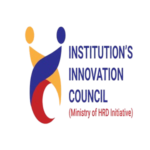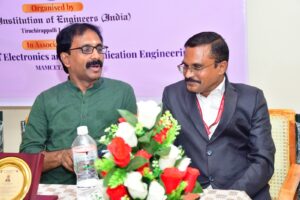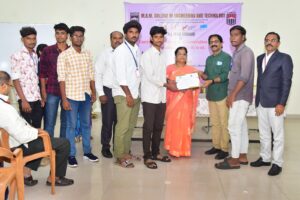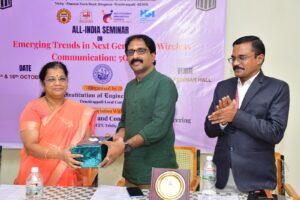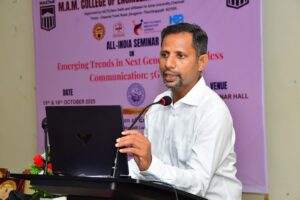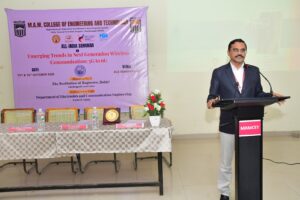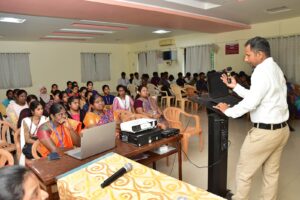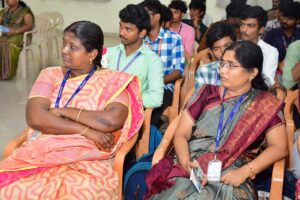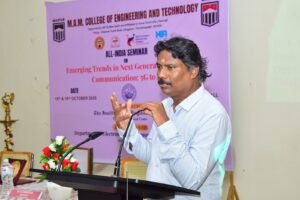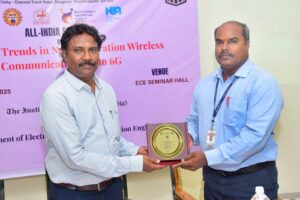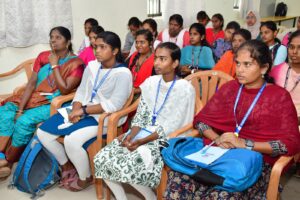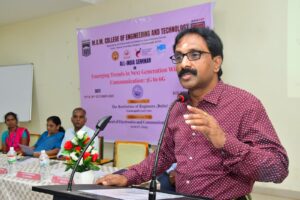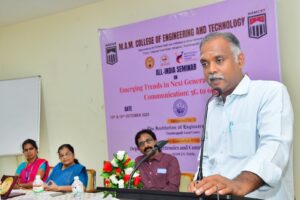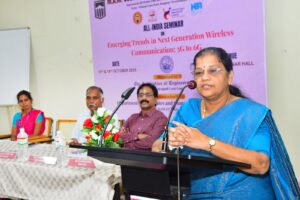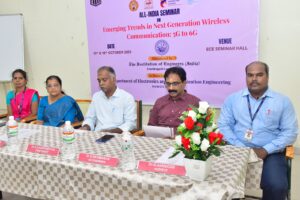IEI sponsored seminar on "Next Generation Wireless Communication 5G to 6G"
Two Days seminar Report On Emerging Trends in Next Generation Wireless Communication: 5G to 6G
Organized by Department of Electronics and Communication Engineering In Association with The Institution of Engineers (India), Tiruchirappalli Local Centre.
The Department of Electronics and Communication Engineering of M.A.M. College of Engineering and Technology, in association with The Institution of Engineers (India) – Tiruchirappalli Local Centre, organized a two-day All India Seminar on “Emerging Trends in Next Generation Wireless Communication: 5G to 6G” on 15th and 16th October 2025. The seminar aimed to bring together academicians, researchers, and industry professionals to exchange knowledge on the latest developments and innovations in wireless communication technologies, with a special focus on the transition from 5G to 6G.
The program began with a warm welcome address by Dr. S. Ravimaran, FIE, Chairman of IEI, Tiruchirappalli Local Centre. In his address, he emphasized the importance of 6G communication and explained how emerging technologies such as Artificial Intelligence (AI), Edge Computing, and Machine Learning are poised to transform the intelligence and efficiency of future communication networks.
The presidential address was delivered by Dr. X. Susan Christina, Principal of M.A.M. College of Engineering and Technology. She highlighted the critical role of ultra-low latency in 6G systems and introduced the concept of Digital Twin technology, explaining how it can be applied to simulate real-time environments for precision applications such as laparoscopic surgeries and medical training. She pointed out that such innovations will revolutionize healthcare and engineering design by enabling real-time synchronization between virtual and physical systems.
The chief guest, Dr. S. S. Karthikeyan, Associate Professor, Department of ECE, delivered the inaugural address on the theme “Vision India 2030 for Next-Generation Communication.” He spoke about the Bharat 6G Vision, emphasizing seamless connectivity, sustainable digital development, and India’s mission toward global leadership in next-generation wireless technology.
Following the inaugural session, Dr. S. S. Karthikeyan conducted the first technical session titled “Emerging Trends in Next Generation Communication.” He presented a detailed overview of the evolution of mobile communication from 1G to 5G, explaining the technological milestones and the direction toward 6G. He elaborated on Bharat 6G Vision Technology, the concept of human-to-machine communication, and the use of terahertz frequency networks. He also noted that future 6G base stations would be compact—similar in size to routers—and would ensure seamless connectivity and efficient spectrum utilization through beamforming techniques.
The second session was handled by Dr. K. Hariharan, Professor, Department of ECE, Thiagarajar College of Engineering, Madurai, on the topic “MIMO Analysis for 5G and 6G Communication.” He explained how Multiple Input Multiple Output (MIMO) systems employ multiple antennas to transmit and receive signals simultaneously, thereby improving throughput and reliability. He also discussed various modulation schemes, the operation of MIMO channels, and the use of beamforming to reduce unwanted radiation. Additionally, he elaborated on signal recombination techniques and the application of pulse modulation in enhancing the performance of MIMO-based systems.
On 16th October 2025, the third session was conducted by Dr. Robinson, Professor, Department of ECE, Mount Zion College of Engineering and Technology, Pudukkottai, on the topic “The Future of Wireless: Exploring 6G and Beyond.” He began with a comparison between optical and wireless communication systems, discussing their advantages and limitations. He then explained key features of 5G and 6G such as bit error rate, network slicing, scattering, and the transition toward micro-cell architectures for better connectivity. Dr. Robinson also introduced Non-Orthogonal Multiple Access (NOMA), a modern multiple access technique that improves spectral efficiency and user connectivity. He concluded his session by highlighting the concept of “connecting everything online”, emphasizing that 6G will usher in an era of intelligent, seamless, and universal connectivity.
The final session was delivered by Dr. J. William, Principal, Roever Engineering College, Perambalur, on “6G Vision and Roadmap.” He began by tracing the scientific principles of magnetism, electricity, and lightwaves that underpin wireless communication. He explained the frequency bands and data rate advancements expected in 6G, noting that 5G has already been successfully implemented in South Korea, forming the foundation for future 6G research. Dr. William emphasized that AI integration in 5G networks marks the beginning of true 6G systems, which are expected to enable data speeds up to 1 terabit per second (Tbps) with nearly zero latency. He also mentioned that 6G infrastructure will operate in the 90–300 GHz terahertz band, supporting ultra-high-speed, low-latency, and energy-efficient communication across a wide range of applications.
During the valedictory session, Dr. S. Ravimaran, Chairman of IEI Tiruchirappalli Local Centre, engaged with the participants by asking questions to assess their understanding and appreciated the students for their active involvement. Finally, Dr. S. Ravimaran, IEI Chairman, Dr. J. William, Guest Speaker, and Dr. X. Susan Christina, Principal, MAMCET jointly distributed certificates to all the delegates.
The seminar concluded with a vote of thanks proposed by Dr. G. Haridoss, Head of the Department of ECE, who expressed heartfelt gratitude to the management, IEI officials, Guest speakers, Principal, Registrar, Dean, Committee members, and participants for their valuable contributions and support in making the event a grand success.




